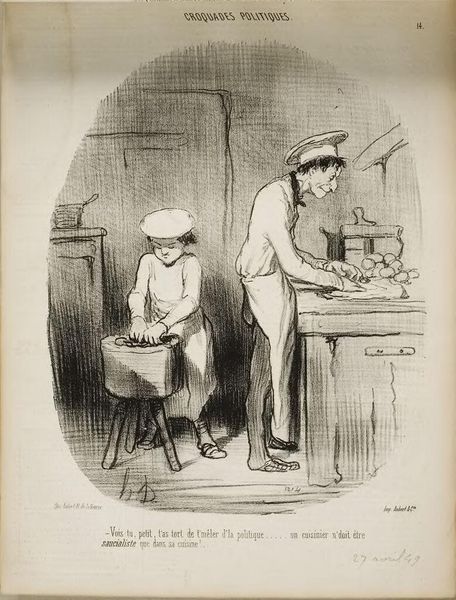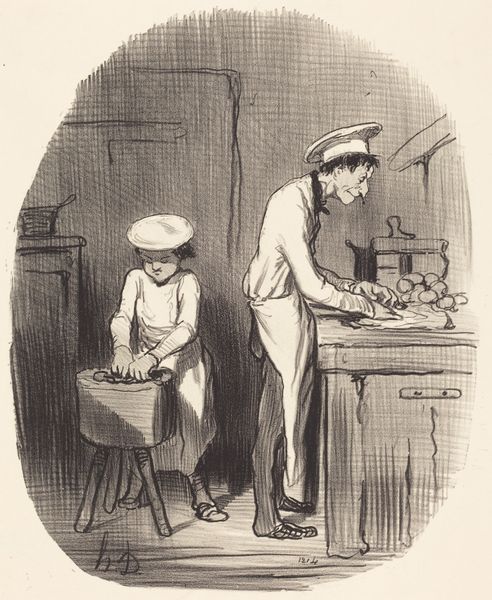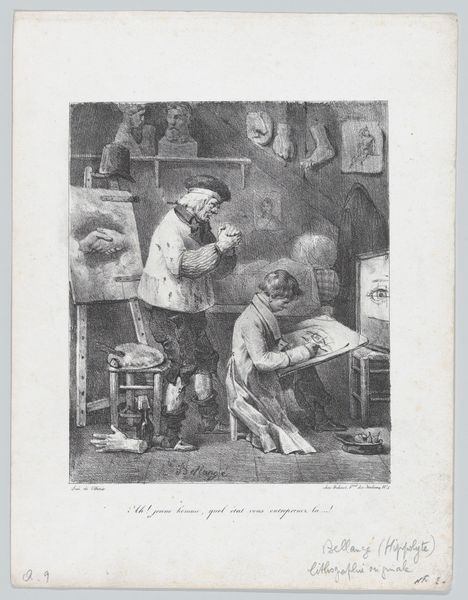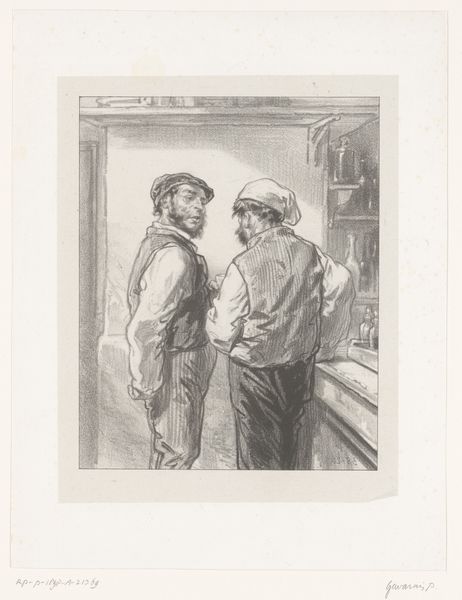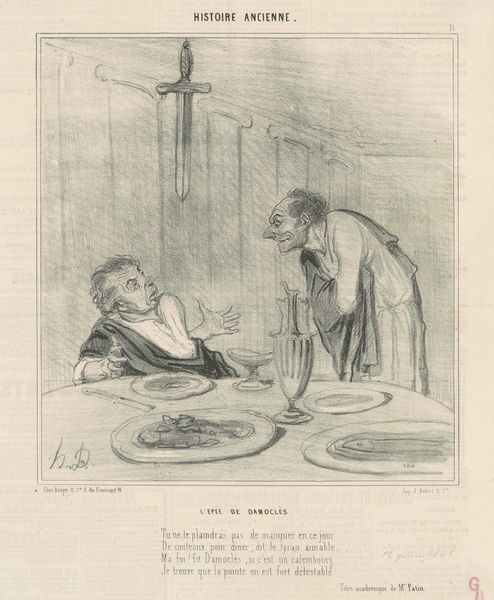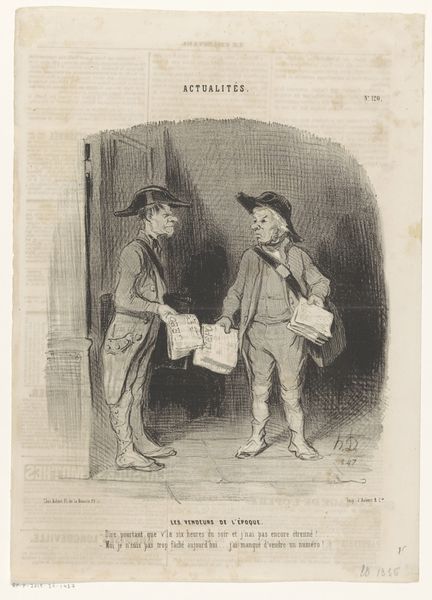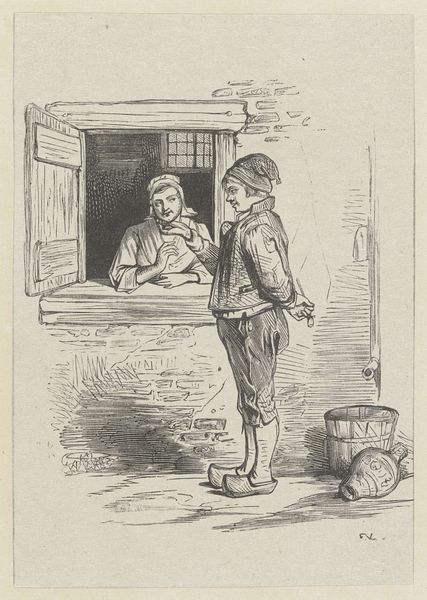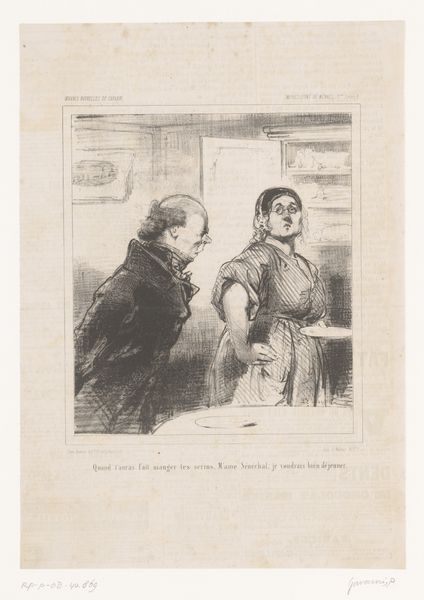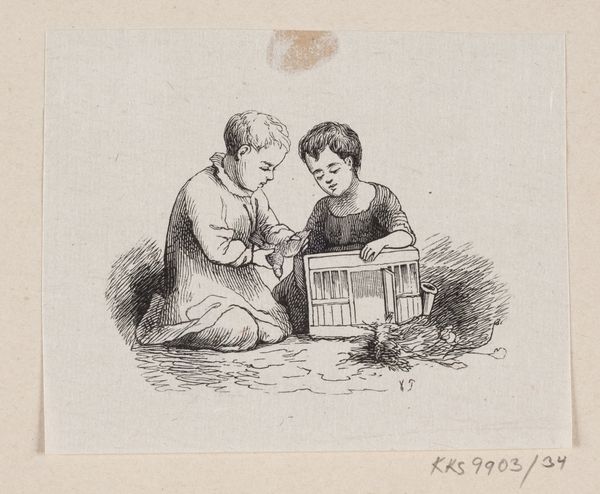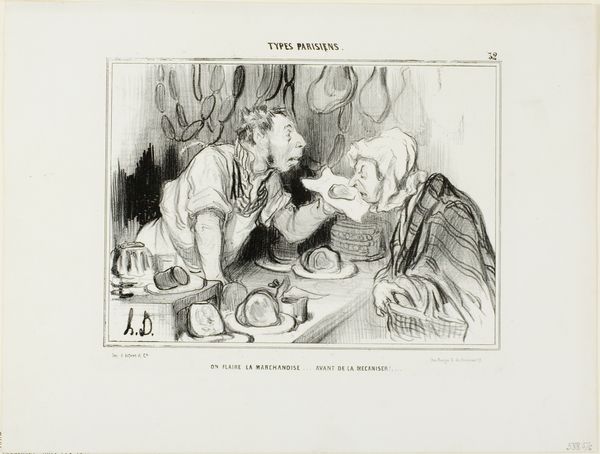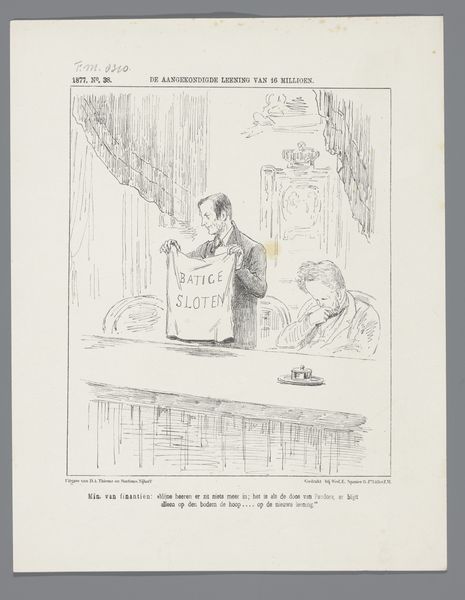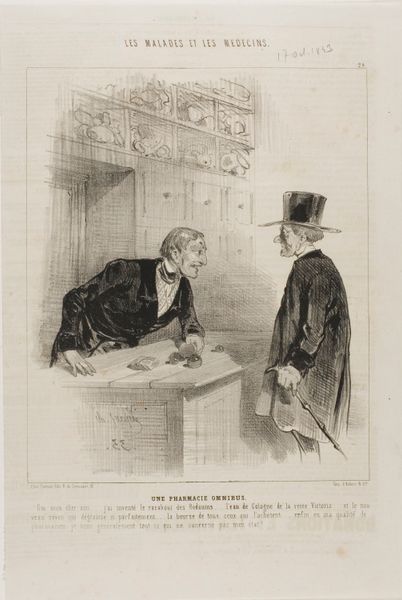
lithograph, print
#
portrait
#
lithograph
# print
#
caricature
#
romanticism
#
genre-painting
#
realism
Dimensions: height 238 mm, width 362 mm
Copyright: Rijks Museum: Open Domain
Curator: The lithograph titled "Jongen bij een kruidenier", or "Boy at a Grocer's", was created around 1842 by Honoré Daumier, and is held at the Rijksmuseum. What’s your immediate reaction to it? Editor: Stark, immediate—it's clearly meant to elicit a strong reaction. The grotesque exaggeration of features creates a powerful, albeit unsettling, image. Curator: Daumier's expert use of lithography emphasizes line and form, doesn't it? Look how he creates depth through dense hatching. The bold lines defining the figures against the subtly rendered backdrop exemplify his control of the medium. Editor: Absolutely, but that manipulation isn't merely technical; it is deployed as a tool to comment on Parisian society. Daumier used his prints to democratize art and critique the bourgeois through their social interactions in his era, aiming at a broader public viewership through publication in popular newspapers. Curator: Indeed. One cannot ignore the caricature-like presentation. Notice the contrasting body types. This grotesque representation is key to decoding the meaning of the work and is an example of his satirical eye for detail. Editor: It suggests a social critique—a pointed comment on class and potentially commercial exploitation. Considering the context of the French July Monarchy in 1842, it reflects the period’s tensions and the rise of the bourgeoisie, whose practices came under increasing public scrutiny. Curator: Furthermore, I am drawn to how the spatial arrangement subtly underscores this thematic tension, in particular how the diagonal line suggests instability and disequilibrium in their relations, which are formally balanced yet meaningfully divergent. Editor: Exactly! It all underscores Daumier's success at marrying formal attributes and socio-historical observations to generate powerful commentary and social impact. I find myself questioning what societal changes art today can enable or reflect, mirroring Daumier’s ambition to use art as a form of social criticism. Curator: Ultimately, it highlights how even through seemingly straightforward sketches, artists can create lasting reflections on society’s quirks and the nature of human interactions, if only we bother to closely consider how they are built on visual terms. Editor: Indeed, looking at this image, it pushes one to ponder on how it interacts with, or echoes within our current environment, demonstrating timelessness even across historical and social strata.
Comments
No comments
Be the first to comment and join the conversation on the ultimate creative platform.
